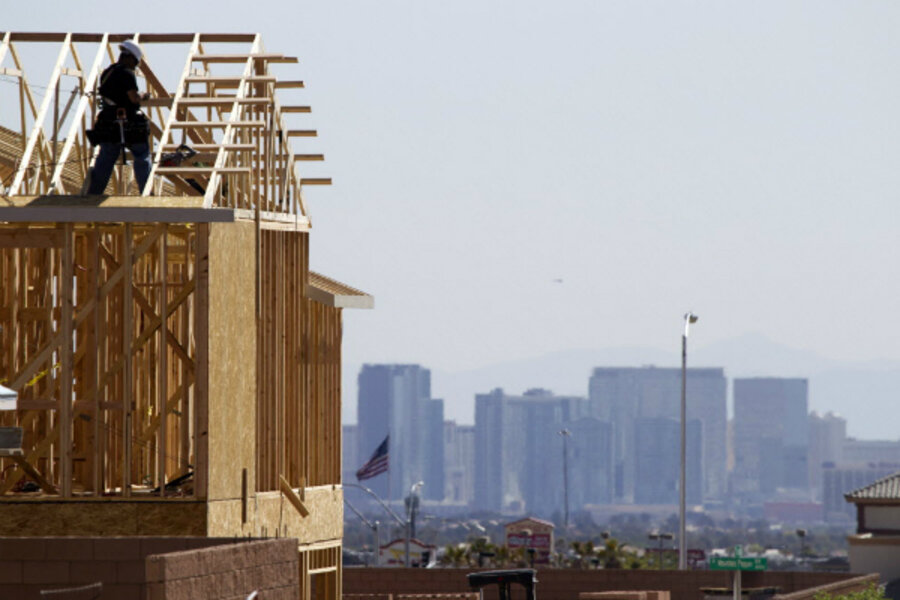Home prices decelerate, but that doesn't spell end to US housing recovery
Loading...
| WASHINGTON
Housing is a weak sector of today's US economy, and some news Tuesday amplifies the point: The pace of home price gains has cooled noticeably in recent months, according to data released by the firm Corelogic.
Home prices nationwide were 10.5 percent higher in April than a year before. But that was the slowest rate of year-over-year price gains registered in 14 months, and the firm is forecasting further cooling ahead.
Does this mean the housing recovery has run off the rails? Not necessarily. The market is still navigating an arduous transition from highly unusual conditions (digging out from a historic boom and bust) to something closer to normal.
The transition isn’t without bumps or difficulties, which may partly explain why the market can be viewed through lenses of “glass half full” or “glass half empty.”
Here’s a look through the more positive lens, while not ignoring the need for improvement.
Prices. Slower home-price increases are a natural step on the path toward normalcy, many economists say. After all, the wild swings of the past decade – big price gains, huge drops, then a rebound as investors snapped up foreclosed homes – aren’t the way a healthy real estate market is supposed to work.
According to data tracked by Yale University economist Robert Shiller, home prices are currently on the high side of historic averages (he adjusts prices for inflation). But they’re not close to the bubble territory of the early 2000s.
The forecasting firm Capital Economics sees prices rising about 4 percent on average for the next few years.
Seller supply. Home sales are running at a rate of about 4.7 million homes per year (as of April), down from 5 million last spring, according to the National Association of Realtors.
This trend shows the challenges the market faces. Partly it’s a buyer problem, which we’ll look at in a moment. But a big problem is a shortage of sellers, real estate agents say. Many people may be holding out for more price increases before listing their homes.
Some forecasters are optimistic that “for sale” listings will increase, at least gradually. Already some recent progress is visible. The slowdown in home prices “is finally motivating sellers to list,” economists Stephanie Karol and Patrick Newport of IHS Global Insight wrote as the latest monthly sales figures came out on May 22. The number of single-family homes on the market rose 5.2 percent from a year before, they noted.
Buyer demand. Affordability is a hurdle for many buyers, due to rising home prices, slow wage growth, and mortgage interest rates that have jumped since last spring.
But if home price gains are cooling, that could allow buyers to get a second wind. The overall job market has improved in the past few months, and economists expect wages to rise modestly this year. Credit conditions may also improve, thanks to both the overall economy and a recent move by the regulator of mortgage firms Fannie Mae and Freddie Mac to encourage more lending.
Yes, the share of people who rent rather than buy today looks poised to remain higher than before the recession, in part because of the weight of student debts. But that doesn’t mean there’s not some pent-up demand from potential first-time buyers.
Building. The housing market has also slowed on the homebuilding front. For two quarters now, residential construction has been subtracting rather than adding to the rate of growth of America’s gross domestic product (GDP), as the pace of construction essentially stalled.
Many forecasters expect at least somewhat of a pickup. Some signs of a rebound were visible in April housing starts, which rose to an annual rate of nearly 1.1 million, up from about 900,000 in January. The construction pace still is about 25 percent or so below historic norms.
Slow as it is, the story in both construction and the broader housing market still looks like one of recovery.








